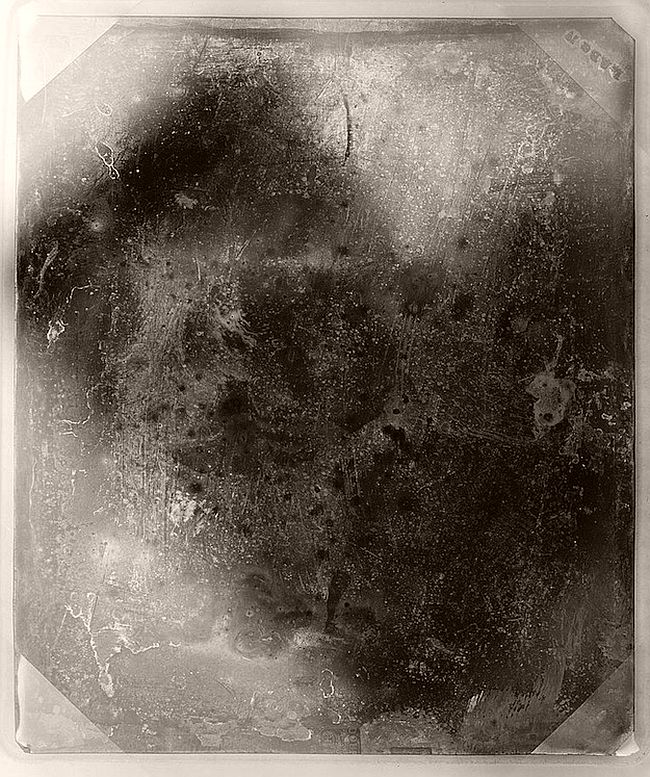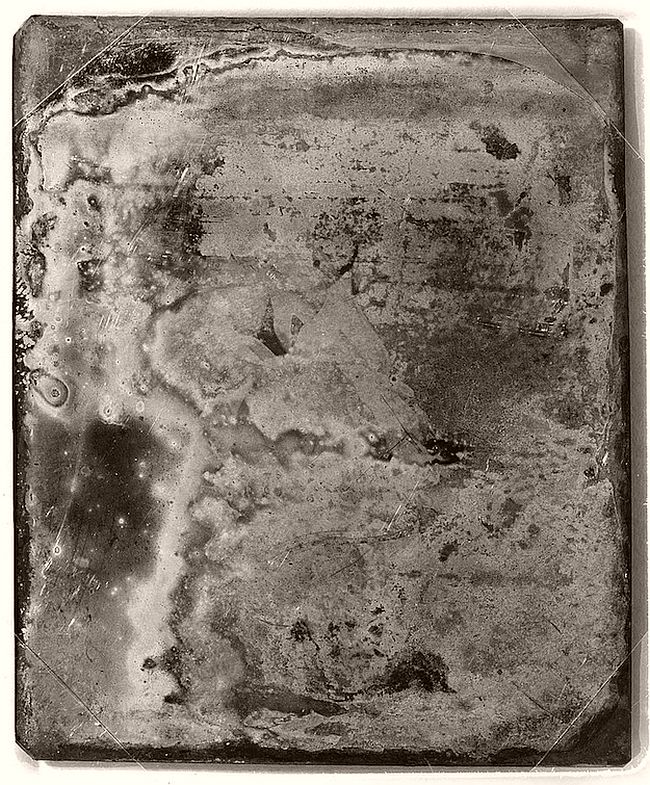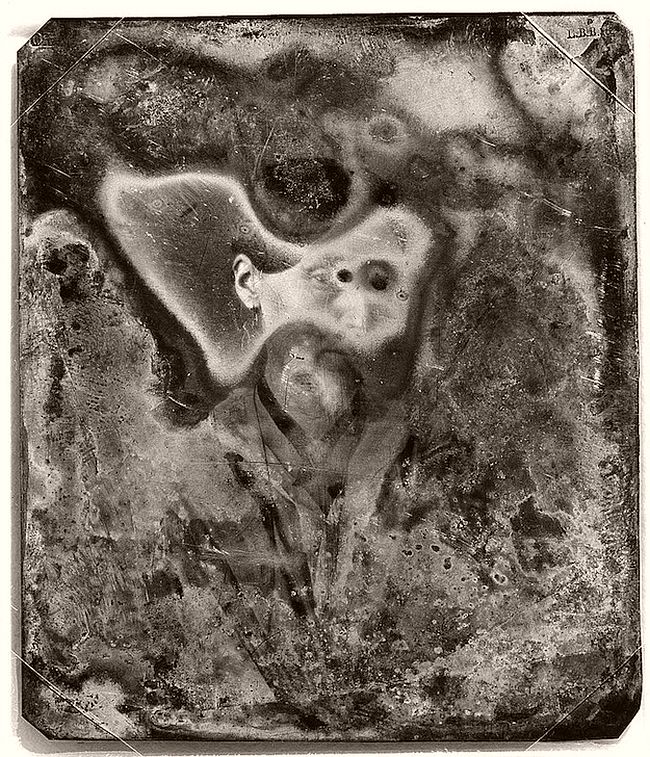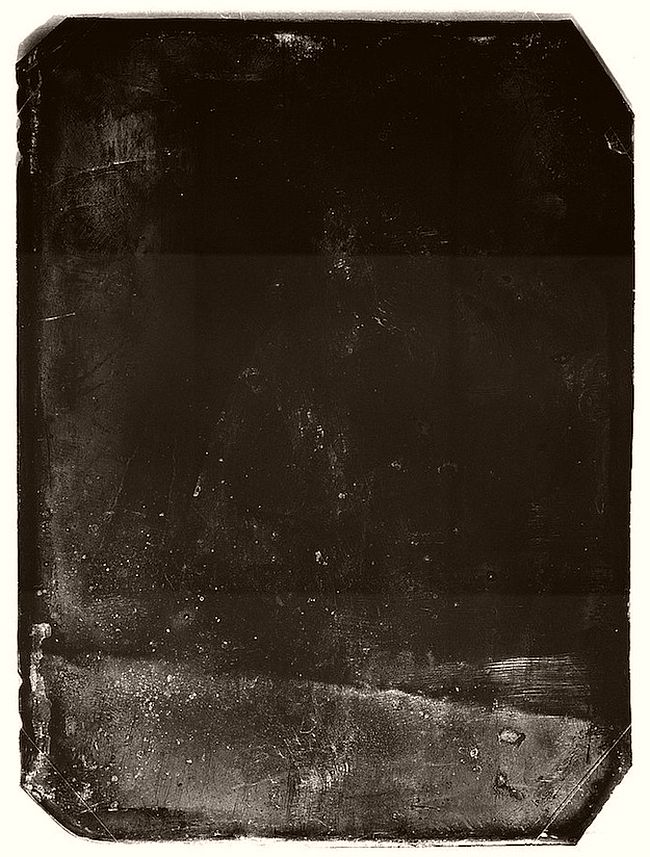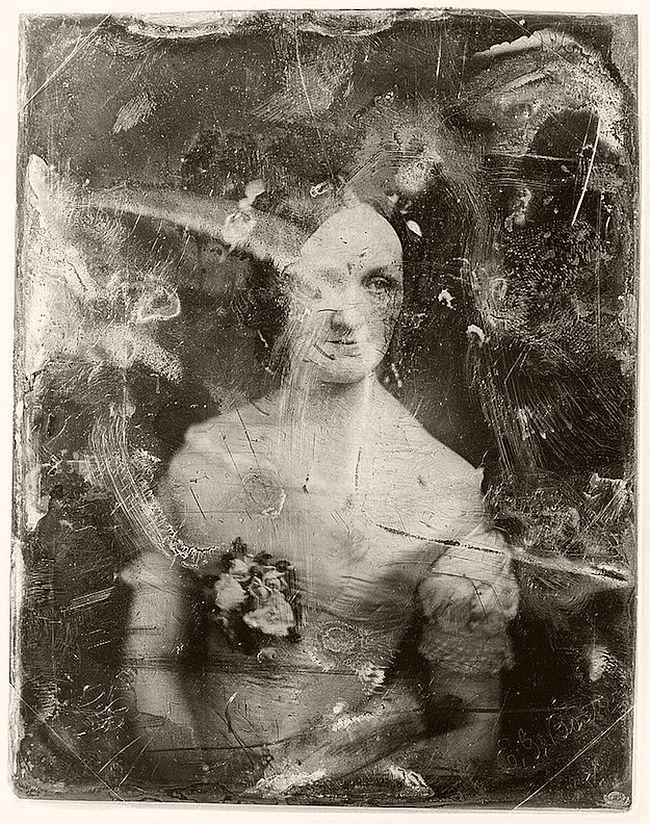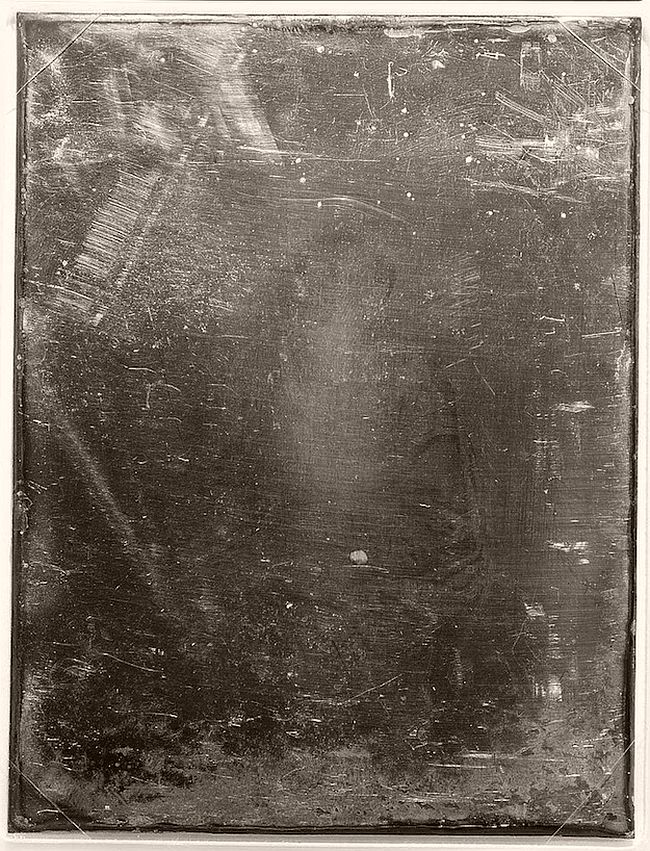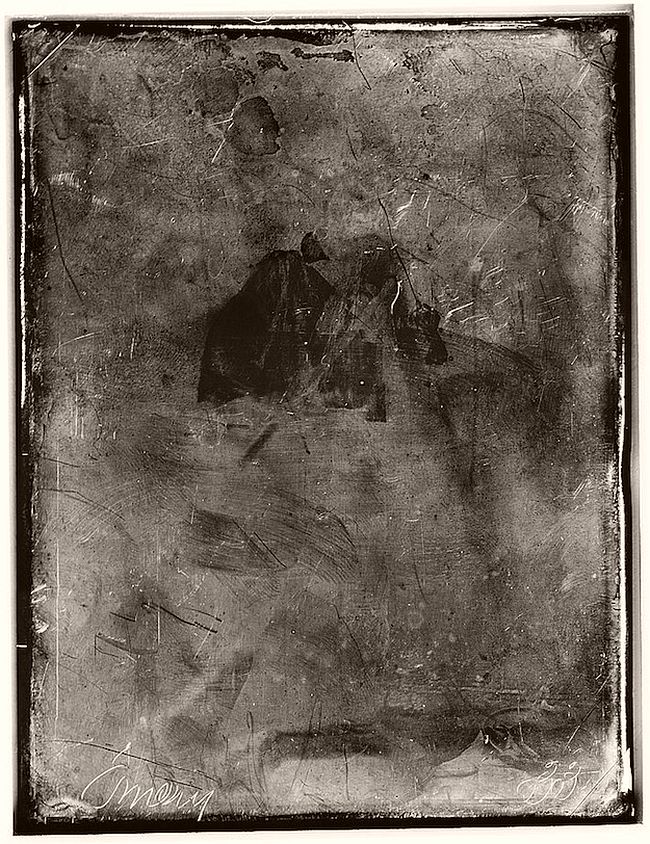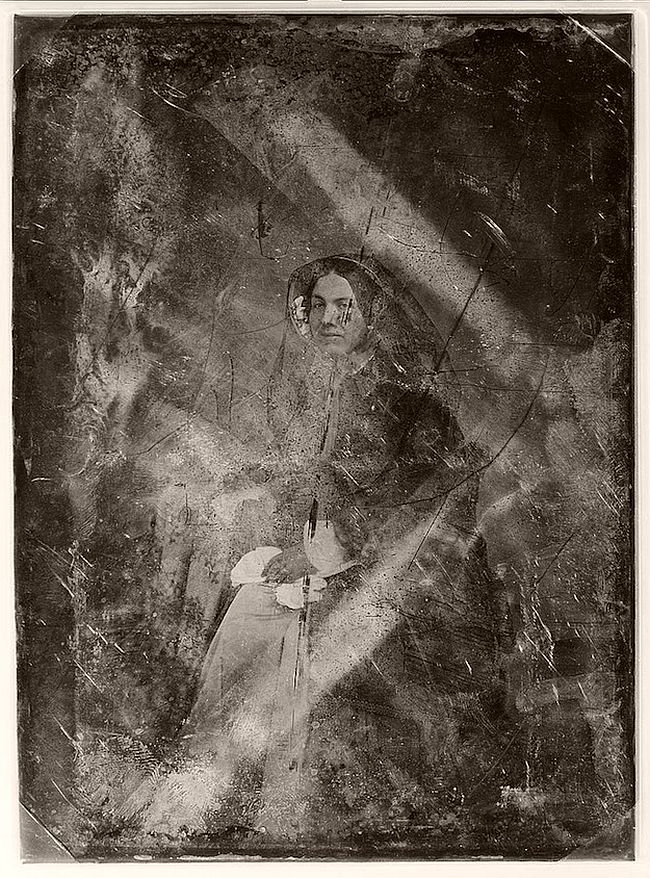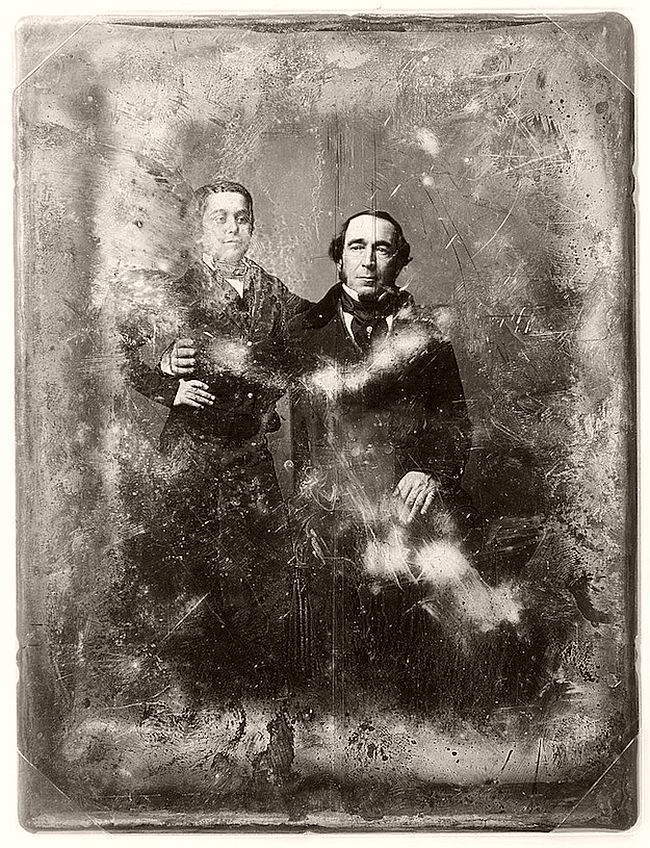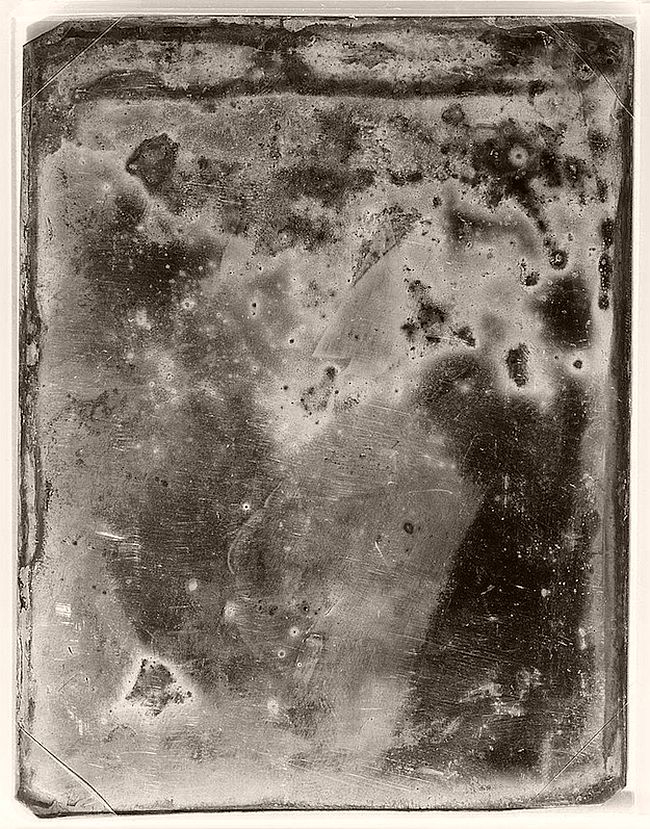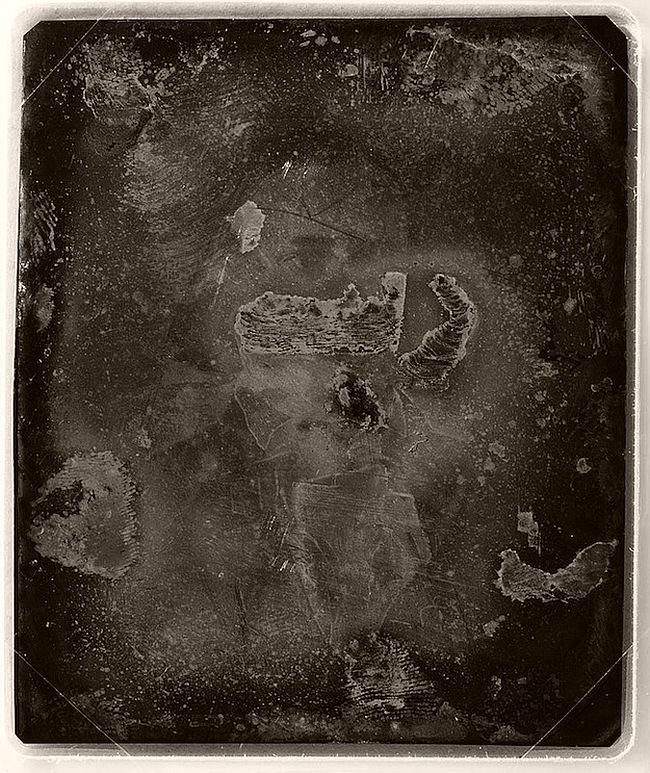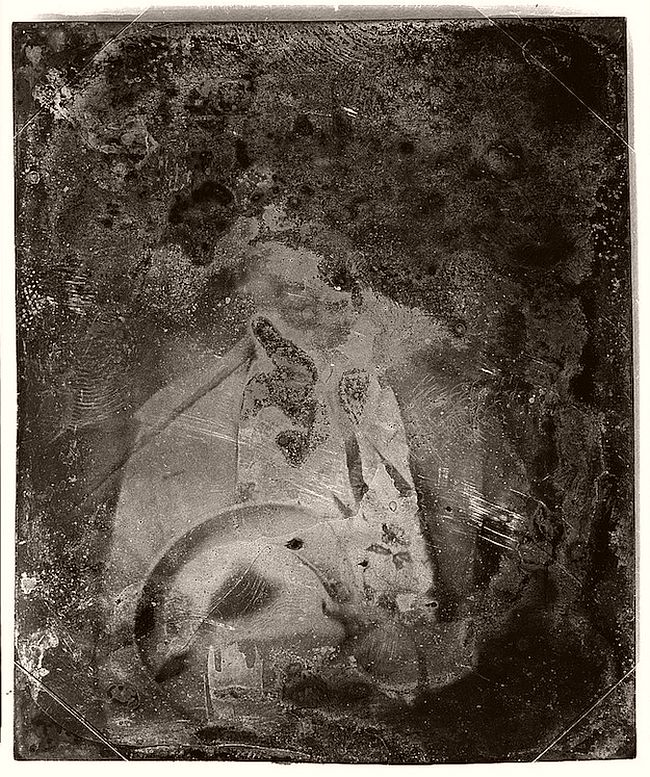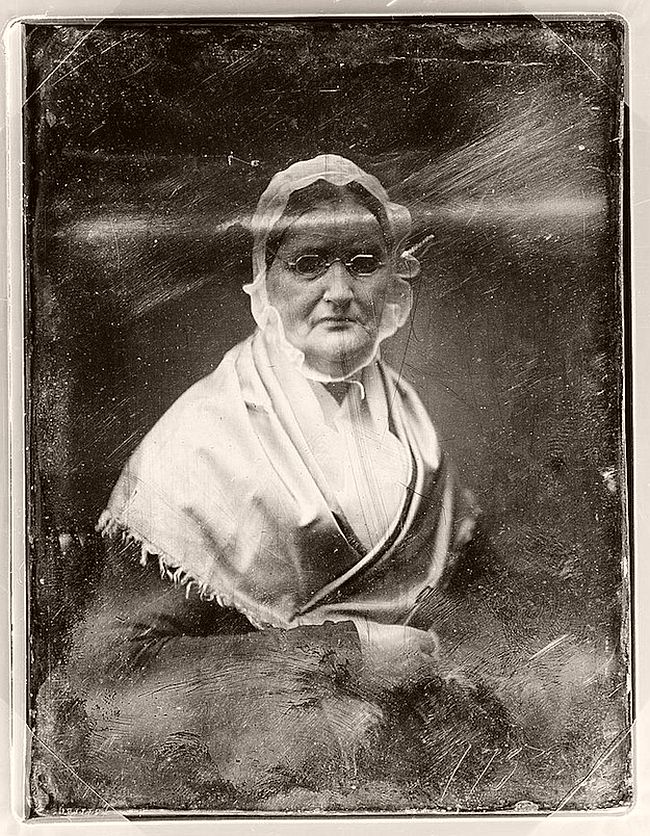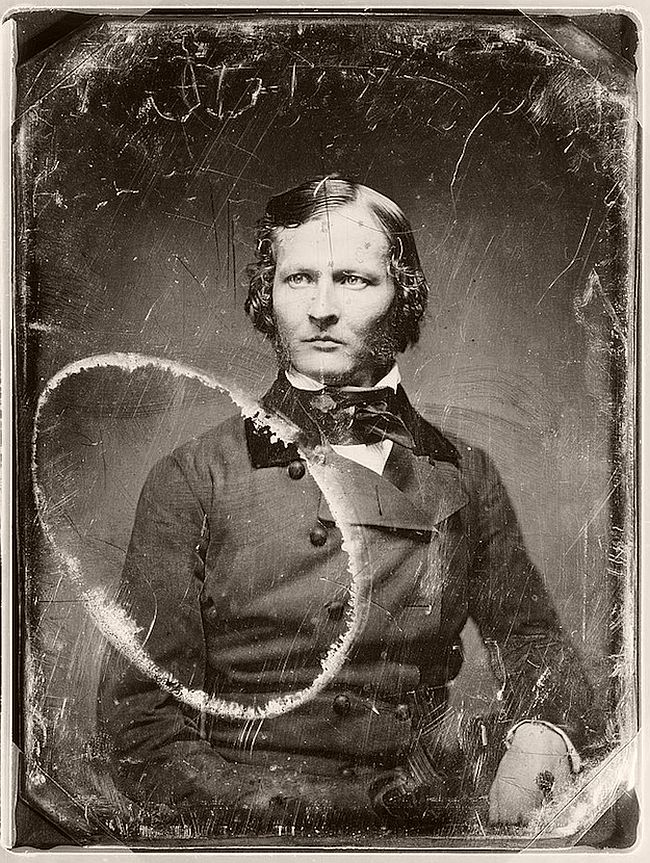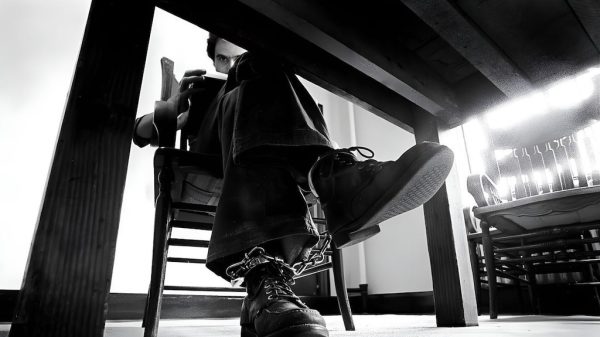In the mid-19th century, daguerrotypes were the first iteration of the photograph that only required a few minutes of exposure, not hours like with previous iterations. The process involved a sheet of silver-plated copper painted with light-sensitive chemicals and developed with mercury vapor. The images were often difficult to see and to preserve.
Mathew Brady, known in the U.S. as the “father of photojournalism,” was a famous photographer who used the daguerreotype process to capture the American Civil War, as well as portraiture for the rich and famous of the American 1800s. In 1920, many of his daguerreotypes were gifted to The Library of Congress, and as the years have worn on they’ve decayed into the strangest, most ghostly, Back-to-the-Future-esque images. They’re dark and creepy and I hope they inspire some nightmares as you try to distinguish the faces lost in the gloom…


